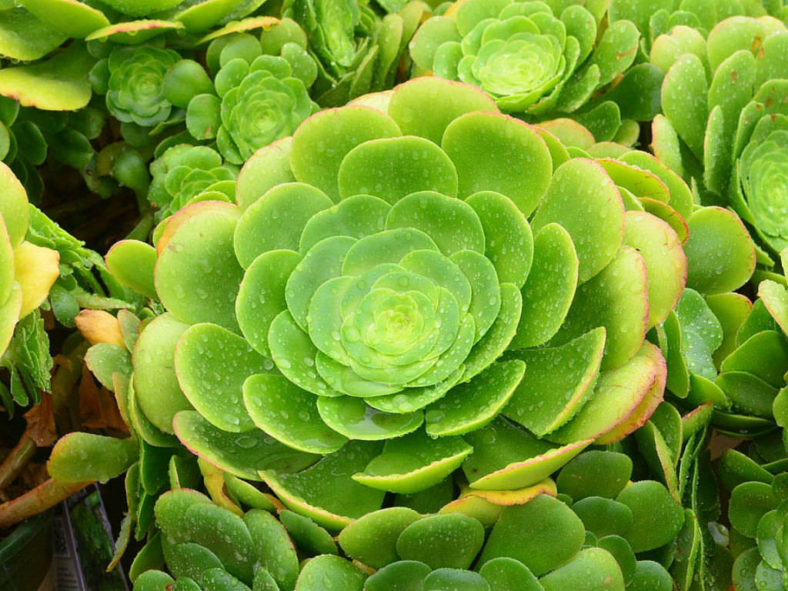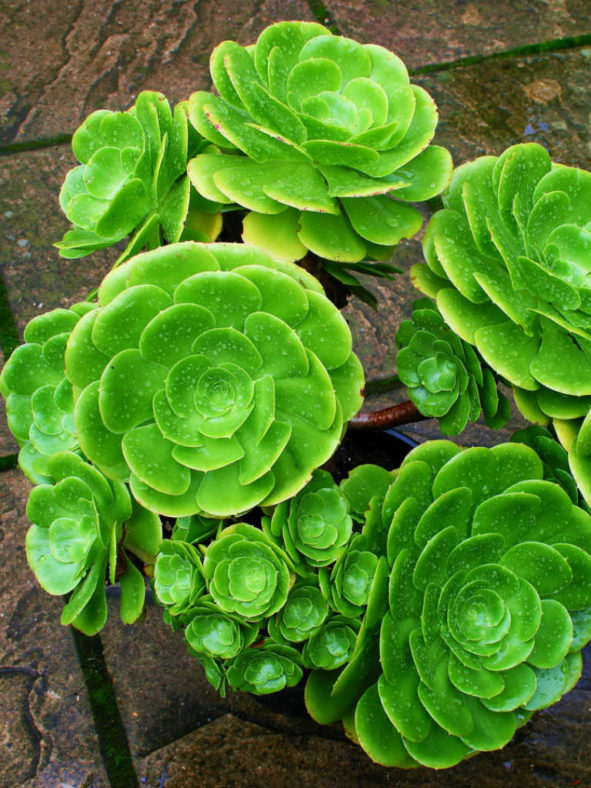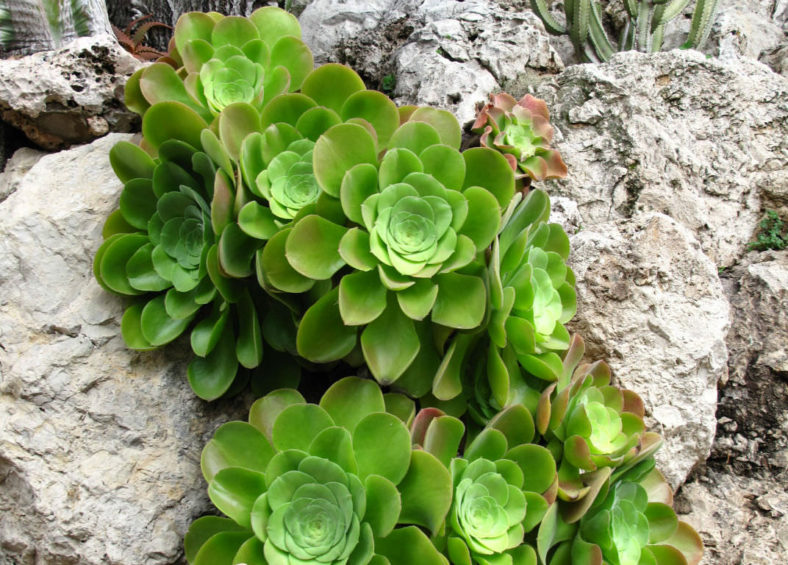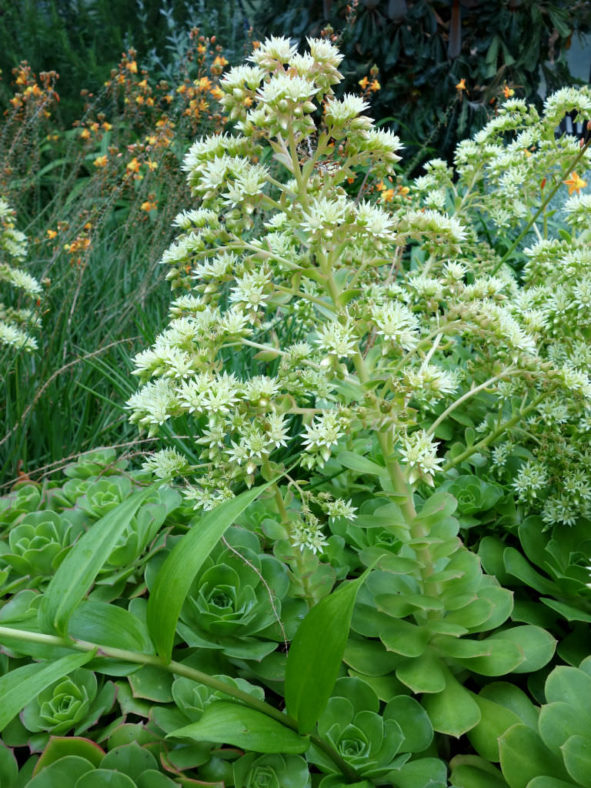Scientific Name
Aeonium canariense (L.) Webb & Berthel.
Common Name(s)
Giant Velvet Rose, Tree Aeonium
Synonym(s)
Aeonium canariense subsp. canariense, Aeonium giganteum, Sempervivum canariense, Sempervivum latifolium
Scientific Classification
Family: Crassulaceae
Subfamily: Sempervivoideae
Tribe: Aeonieae
Genus: Aeonium
Etymology
The specific epithet "canariense" (pronounced "kuh-nair-ee-EN-see") means "of or from the Canaries" and refers to the origin of this species in the Canary Islands.
Origin
Aeonium canariense is native to the Canary Islands. It grows on dry slopes and cliffs in northern Tenerife at elevations ranging from 1,970 to 4,265 feet (600 to 1,300 m).
Description
Aeonium canariense is a succulent plant that forms large rosettes of velvety, bright green, occasionally reddish or yellowish leaves. The rosettes are cup-shaped with more or less erect inner leaves and can reach a diameter of 24 inches (60 cm). The leaves are obovate to oblanceolate, narrow abruptly into a sharp point at the tips, measuring up to 14 inches (35 cm) in length and 4.8 inches (12 cm) in width.
The flowers are star-shaped, with 8 to 10 whitish-green to greenish-yellow petals, and appear clustered in large, conical racemes on stalks that can grow up to 12 inches (30 cm) long. The racemes can reach a height of 18 inches (45 cm) and a diameter of 12 inches (30 cm). This plant is monocarpic, meaning the rosettes die after flowering.

Subspecies of Aeonium canariense
- Aeonium canariense subsp. canariense
- Aeonium canariense subsp. christii
- Aeonium canariense subsp. latifolium
- Aeonium canariense subsp. longithyrsum
- Aeonium canariense subsp. virgineum
Hybrids of Aeonium canariense
How to Grow and Care for Aeonium canariense
Hardiness: USDA hardiness zones 9a to 11b: from 20°F (-6.7°C) to 50°F (10°C).
Aeoniums do not like hot or dry weather. Therefore, they may go dormant in summer and do not require any water except in arid conditions. In extreme heat, their leaves will curl to prevent excessive water loss. Placing them in moist shade will keep them growing, but their true growth season is from winter to spring, when temperatures are cool, ranging from 65°F to 75°F (18°C to 24°C), and the air is damp. In winter, water the soil whenever it has dried out. Test by poking your finger down into the soil an inch or two (2.5 to 5 cm). Too much moisture or allowing them to sit in wet soil will cause root rot.
A sandy loam or regular potting mix is preferable to a mix specifically designed for cacti and succulents, as Aeoniums require some moisture. If you are growing them in containers, repot them every 2 to 3 years with fresh potting soil.
Feed during the growing season with a half-strength balanced fertilizer every month or so. Do not feed while dormant.
Learn more at How to Grow and Care for Aeonium.
Links
- Back to genus Aeonium
- Succupedia: Browse succulents by Scientific Name, Common Name, Genus, Family, USDA Hardiness Zone, Origin, or cacti by Genus
Photo Gallery
Click on a photo to see a larger version.


